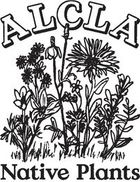From time to time, we receive concern from a client about a plant mortality that happened in their recent planting. While it is not always easy to know the exact reason for a plant’s death with some probing questions we can get a better picture of potential challenges on the growing site that may have been a factor. By following some establishment guidelines and learning about the preferred conditions of a particular species you will set yourself on the path to better planting success with native plant plugs.
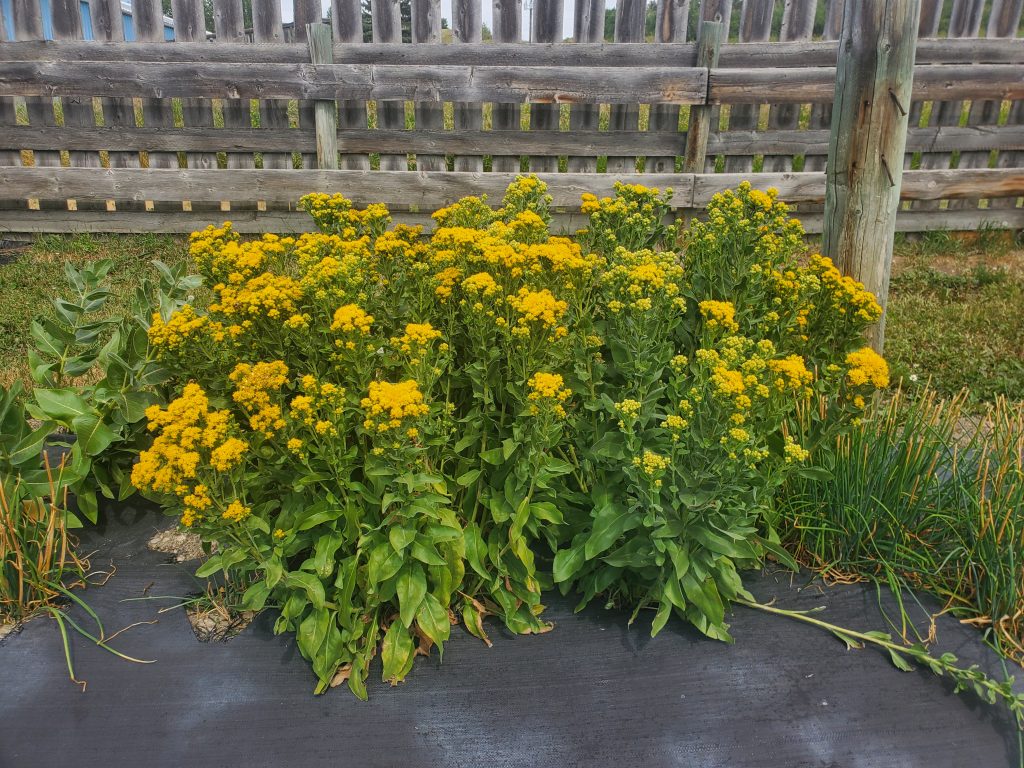
Before Planting
To better ensure success, before planting an area it is recommended you do some research and create a good plan for your site-specific conditions.
When we explain to people that we mainly sell native plant plugs they have different ideas of what this looks like. Click here for more information on plugs.
Choose the Ideal Plant Species for Your Site Conditions
Plants will thrive best when they grow in their preferred growing conditions of soil moisture, light exposure, etc. It is a good idea to research a plant’s preferred environmental conditions to set your project up for success. We have a plant selection database featuring the native plants from our catalogue. This resource allows you to select a variety of parameters to help match plants best suited for your site.
Understand the Plant’s Life Cycle
Plants can be annual, biennial, or perennial. Annuals are plants that only live for one season. Biennial plants usually live for two seasons and typically flower in the second. Perennials are plants that live more than two years. Many can be very long-lived and some are more short-lived. Understanding the lifecycle of the plant species you choose will help you to discern natural losses that occur when a plant reaches the end of its life versus other causes. Allowing shorter-lived plants to disperse seed naturally or saving their seed is a great way to ensure another generation of plants can return to your site.
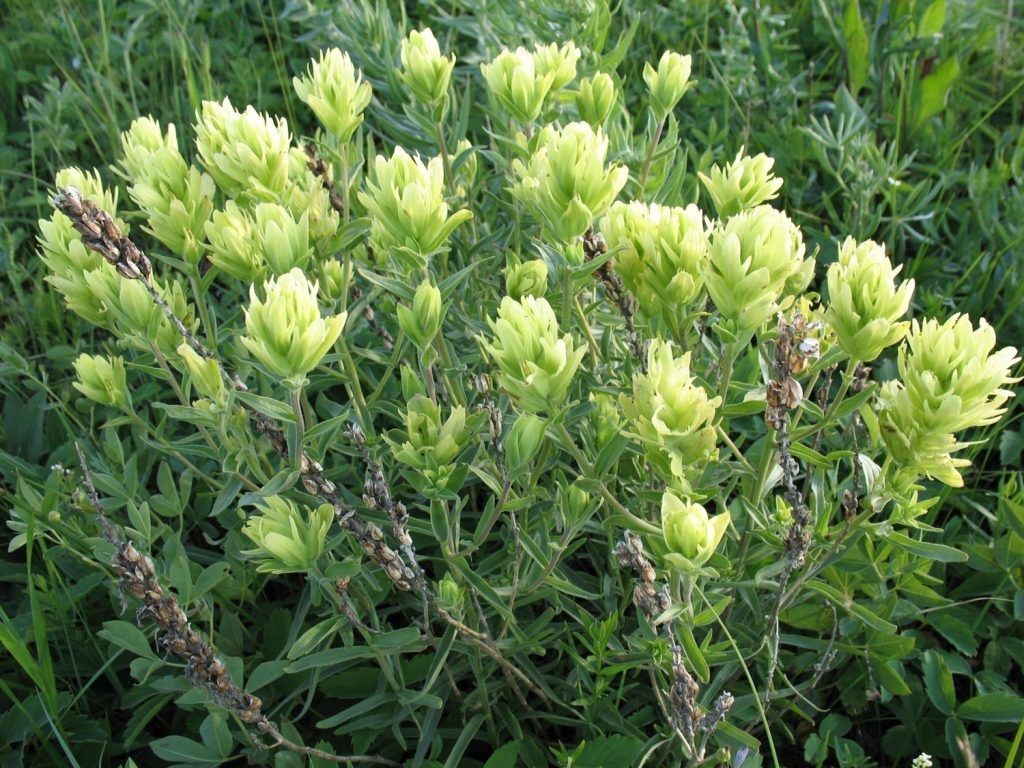
Consider Specialized Growing Needs
Some plants have unique adaptations. For example, hemiparasitic plants like Paintbrushes (Castilleja spp.) parasitize the roots of nearby plants so it is a good idea to plant them near other species, especially native grasses. Making accommodations to support the unique growing needs of your plant will help them thrive.
Certain plant species will senesce top growth during the growing season. Some native Arnica and Primula (Shooting Star) species are good examples of this habit. This is an adaptation of the plant that may be used to save energy during environmentally difficult or stressful times such as hot years with low precipitation. Place a stake or tag beside the planting so you do not accidentally disturb the roots
Plant in Multiples
Recognizing that some loss may occur over time, plant extra plugs of a single species if budget allows. Instead of one or two try a grouping of three to five. This way, if you lose a plant you will still have enough of the desired species to maintain a nice, full planting.
By having a group of multiple plants, you have created a broader genetic pool than just one or two individuals. Whether these plants propagate themselves by seed or vegetatively, this will increase chances of long-term survivability on your site. Different plant species will need different spacing and overall planting size will vary with mature plant size.
Select Plants that Grow in Your Ecoregion
Learn which ecoregion you live in and what plants have historically lived in your area. Native plant species that grow in your ecoregion evolved there over millennia and are well adapted to the local environmental conditions.
Look for regionally sourced native plants. A particular species may be native to areas with a different climate or region than yours. Plants sourced from farther away may not be as well adapted to your local climactic conditions.
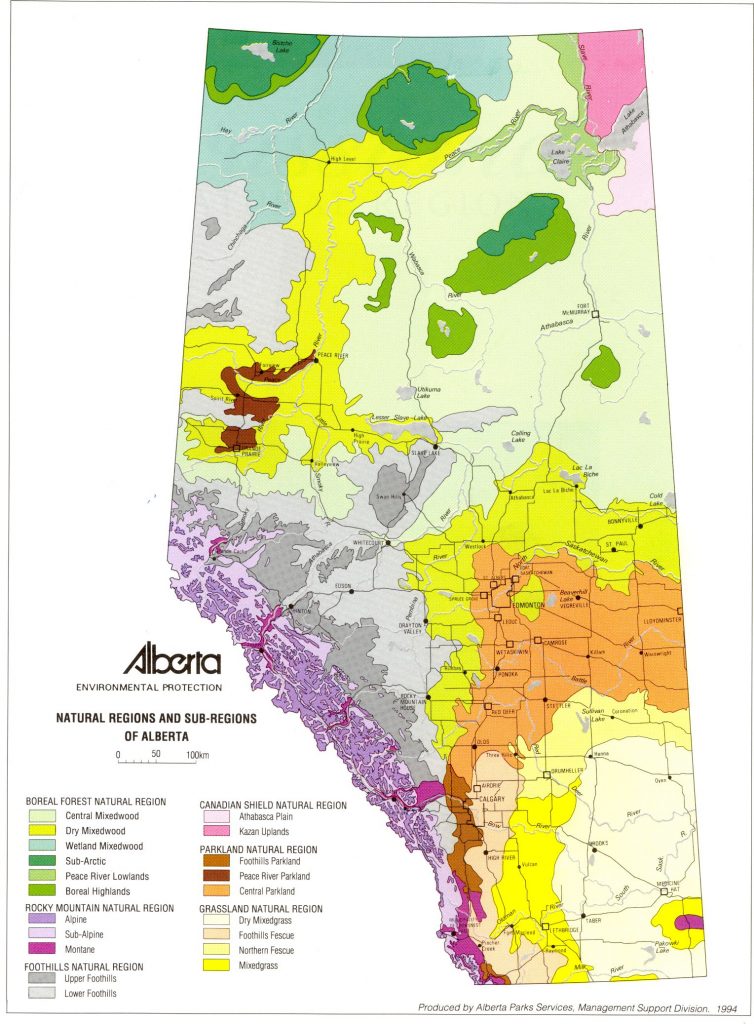
Immediately after Purchasing Plants
Store Plants Properly
Avoid leaving plants in a vehicle, especially on sunny days. If you have no other choice, ensure you are parked in a shady spot with the windows rolled down. Otherwise, this environment can cause plants to overheat and may result in damage or death.
If your plants are packed for pick up or shipping they may be wrapped in translucent material. To protect their roots, leave them in a shaded area out of direct sunlight until planting.
Sunny areas next to walls, patios, and rocks tend to heat up more and may cause adjacent plants to overheat or dry out faster.
Do not keep your plants inside your house. This will cause them to lose their acclimatization to the outdoor daily and nightly temperatures.
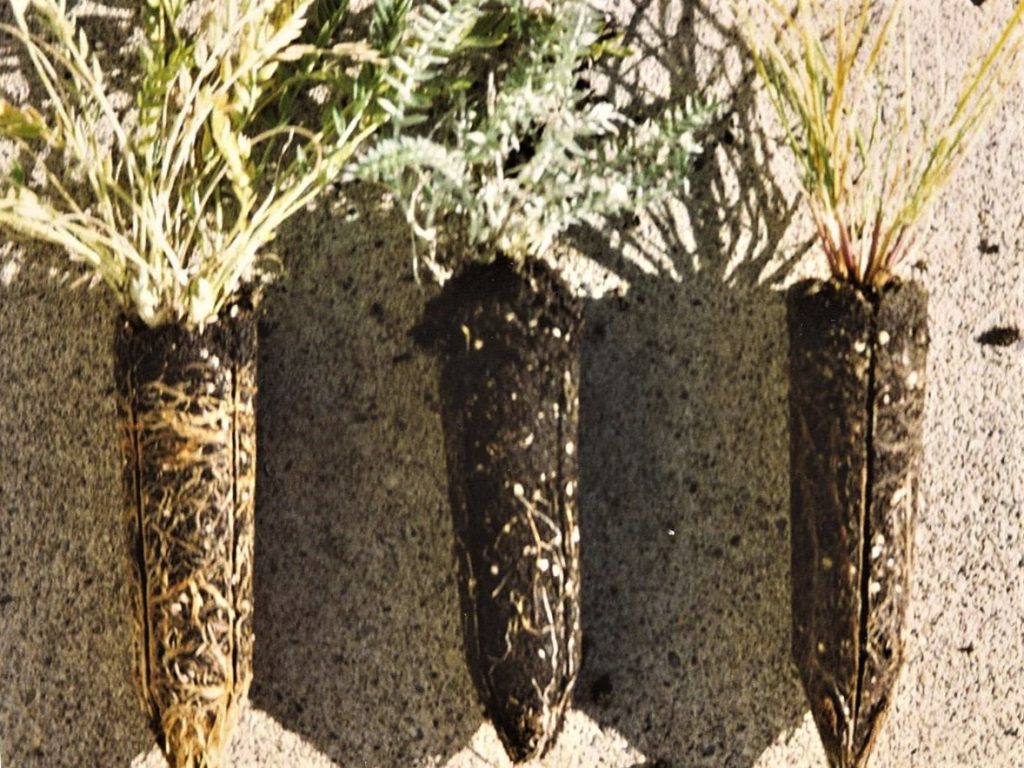
During Planting and Early Establishment
Handle Plants with Care
Be careful to avoid breaking stems or crushing leaves when handling plants. Avoid exposing the roots to direct sunlight for extended periods of time as this may damage delicate root tissues.
If you are holding plants for extended periods it is critical that you regularly check them for water. Different species may require different watering needs so scheduled checks are key to keeping them happy. It is best to plant the plugs as soon as possible but if you have to hold them for the season you may want to consider putting them in a larger pot.
Plant Plugs Properly
Plants must be properly planted to ensure successful establishment. The top of the rootball should be level with the soil. When filling them into the hole you’ve dug, remember to compact the surrounding soil gently but firmly around the plant to fill any large air pockets.
The hole should be twice as large as the rootball or more to ensure nearby soil is cultivated and ideal for rooting and watering.
The rootball must not be sticking up out of the soil and the crown of the plant shouldn’t be buried.

Properly Water Your Plants
After planting you must water the plant in well. Keep in mind that dry soil is typically more difficult to moisten. It is helpful to use the shower setting on your hose nozzle to gradually sprinkle the soil with water. If the water is running off the soil surface you may want to water the area, move to another, come back, and then repeat until the soil has been well-saturated. Use your finger to see how deep the moisture has infiltrated. Drip hoses can work very well to saturate the soil slowly and deeply.
For best results, maintain regular watering while you establish new plantings. Giving deep waterings spaced out over time will allow plants to develop better root systems. Watering too frequently (i.e., every day) can be harmful while too seldom will allow plant desiccation. It is a good idea to regularly observe the plants, feel the soil, and watch precipitation trends to influence when you water.
You will want to allow the soil moisture to dissipate enough between waterings so the soil does not remain waterlogged. Constant overwatering will create an anaerobic environment which has a negative impact on most upland plant roots. Allowing moisture to dissipate is especially important for many prairie species that are used to drier conditions.
Give Plants Space from Mulch
If you are using mulch to suppress weeds or as a topdressing to provide organic nutrients make sure to leave adequate space away from the stem of a plant. Mulch that is too close to the plant or partially burying the stem can cause disease or choke them out.

Landscape fabric cut away from the base of Showy Oxytropis (Oxytropis splendens), allowing space around the plant. They are emerging into their second season after one year of establishment
During Establishment
Mitigate Damage from Animals, Insects, and Disease
Native plants are likely to attract native wildlife. This is one of the joys of growing them. In most cases insect eggs, larvae, or adults living on your plants or occasional browsing by wildlife should not be a cause of concern.
Severe pest issues including fungal, insect, or viral problems may indicate your plant is stressed–especially if the plant appears unhealthy or looks to be struggling. This may be caused by less-than-ideal growing conditions or other external factors. It may be necessary to evaluate the growing site conditions, plant species preferences, and nearby pest infestations to troubleshoot the cause.
Consider watering in the morning to avoid water sitting on the leaves overnight which can encourage fungal disease.
Animals like deer and squirrels can eat or pull plants, stunting or killing them. Consider selecting plants that deter unwanted wildlife with spines, thorns, or strong odours. Creating barriers will also help to protect your plants from damage which can be especially useful during first year establishment. For example, introduced squirrel species in urban areas can be particularly troublesome but they can be kept off new plantings with wire mesh protecting the planting. The mesh can be looped into a circle around the plant and attached to a stake. You can also lay the mesh overtop the plants in such a way that it does not crush them. Stakes of various materials can be useful for this application. Sod staples and a hammer will be useful to secure the edges of the mesh to the ground. These methods will not necessarily be practical for larger plantings.

Plains Prickly Pear Cactus (Opuntia polyacantha) is a drought tolerant species that requires less water during establishment.
Water Only as Necessary
Plants should be watered properly in the first year to ensure successful establishment. We offer a watering guideline to help clients succeed with their plantings. The right native plants planted in the right environmental conditions shouldn’t need additional water after one year of establishment. This makes many of these local species ideal for use in our water-saving, xeriscape gardens and for naturalized or reclaimed landscapes.
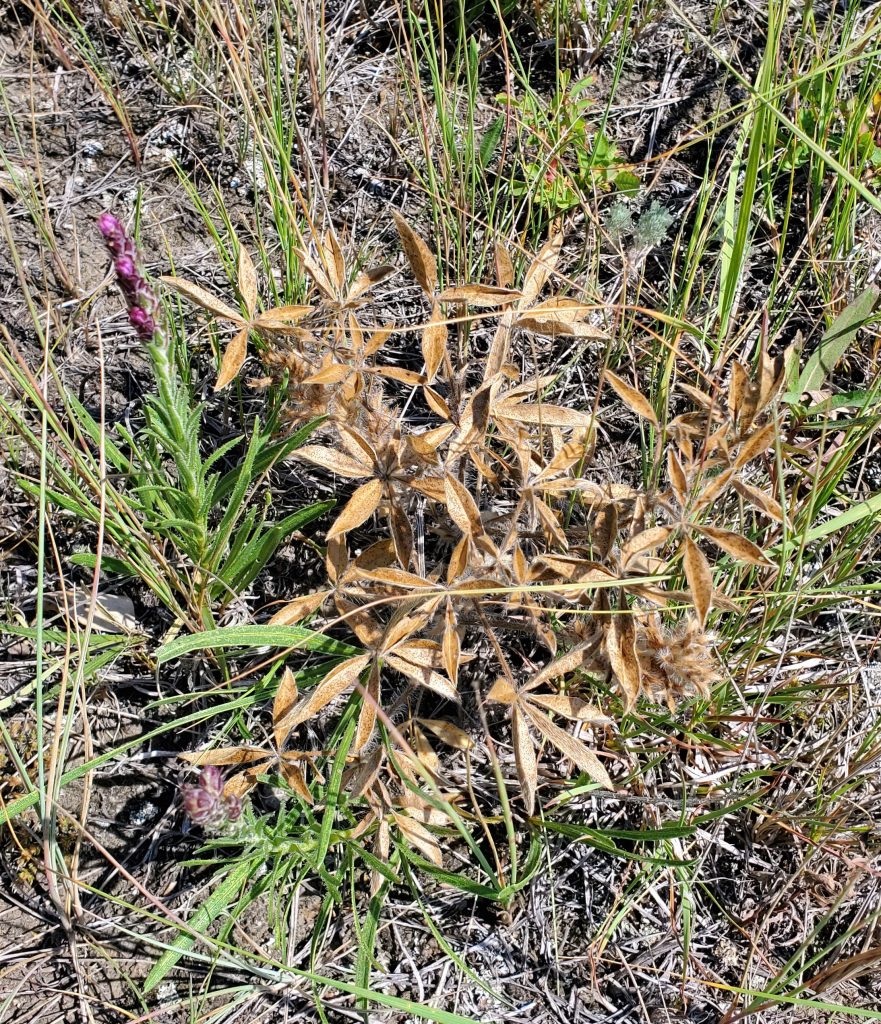
Recognize the Difference Between Senescence and Plant Death
It is normal for some perennial herbaceous plants to senesce after producing fruit or seeds. This may be typical for species at the end of the growing season. Early flowering species like Shooting Star or Prairie Turnip will likely senesce by mid-season. This should be expected and is not cause for concern. In some cases, a plant will go dormant for an entire season and will not reappear until the following year if the seasonal conditions for growth were unfavourable. While this behaviour can be unpredictable it is something to keep in mind when growing certain native plants.
